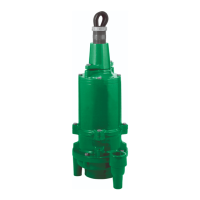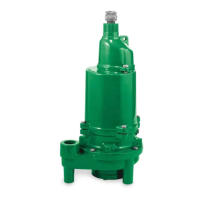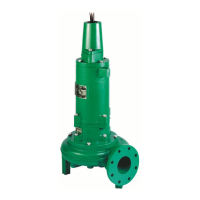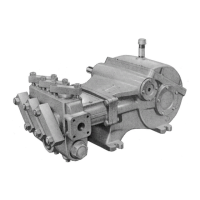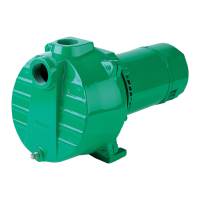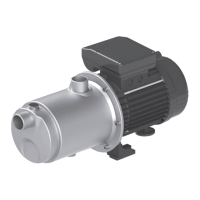32 33
The torque value for each pump should be as follows:
Stud Threads
5/8" – 11UNC at
100 Ft. Lb
3/4" – 11UNC at
100 Ft. Lb.
7/8" – 9UNC at
250 Ft. Lb.
3/4" – 11UNC at
160 Ft. Lb.
SC-30 SC-45 SC-65 MA-25M
SC-30H SC-45H SC-65H MA-25L
RO-23 SC-45L SC-65L
MA-15M RO-38
MA-15H RO-64
MA-40M
MA-40L
All stuffing boxes are retained by large bolts which
extend through the liquid end, serving to clamp the box
tightly against the fluid end face.
Using a socket extension and torque wrench, tighten
clean, well-oiled threads and nut faces as follows:
Long Screws Stuffing Box
5/8" – 11UNC at
100 Ft. Lb.
1/2" – 11UNC at
50 Ft. Lb.
3/4" – 10UNC at
175 Ft. Lb.
3/4" – 10UNC at
160 Ft. Lb.
MA-25L RO-23 MA-40M MA-40L
MA-25M MA-15M RO-38
MA-15H RO-64
Failure to fully and evenly tighten these studs (or cap
screws) can lead to early failure, plunger misalignment
and failure, and short packing life. Retighten after 500
hours of operation.
CONNECTING THE PLUNGER
Install the rubber baffle on to the integral extension
rod, sliding it against the knurled shoulder of the
plunger. Roll the pump crankshaft slowly until the
plunger male threads touch the mating female threads
in the crosshead.
Applying a pipe wrench to plunger knurled area,
thoroughly tighten the connection. Do NOT use a
“cheater” when connecting plunger to extension rod.
(Serves no useful purpose, and may damage the
connection!)
PACKING
Packing life for aramid fiber packing may be improved
in some applications by regular, systematic lubrication.
An optional force feed lubricator assembly is often
recommended especially for pumps on continuous
duty. This provides regular, controlled supply of
lubricant lowering friction and heat.
Additionally, the regular application of the correct
lubricant aids dissolving of salt and gyp tending
to build up on the plungers in produced water
applications. For this service, Rock Drill Lubricant is a
popular and effective packing lubricant.
Plungers in CO
2
, ethane, or other very cold liquid
services may use brake fluid. This fluid does not
congeal into a solid which cannot enter the packing.
Consider the use of an air-sealed cradle into which
dry (instrument) air may be directed, excluding the
moisture which causes plunger icing especially in very
humid conditions.
Packing lubricant for pumps on light hydrocarbons,
hot water, lean oil, naphtha, or gasoline often requires
experimentation.
A good start is to use steam cylinder oil. Castor oil
is sometimes successful as a packing lubrication
for liquid propane and butane services, at ambient
temperature.
In pumps placed in arctic service, a special low pour
point oil is indicated.
Packing lubrication is not permitted on some services,
such as amine, foodstuffs, etc., and other packing
styles and materials may be required.
PLUNGERS
Myers Aplex Series offers its own unique product:
the Myers Aplex Series Rokide
®
plunger. This
premier quality plunger consists of a chromium-oxide
deposition on a solid stainless steel body.
Ordinary handling will not damage this fine product.
Avoid striking the coated surface (black) during
installation. Apply light forces only on the ends of the
plunger. Do not hammer or pry.
All threads on Myers Aplex Series plungers must be
CLEAN and oiled before assembly. Stainless steel
(although very corrosion resistant) has a tendency to
gall and seize. To avoid this, an anti-seizing lubricant is
well worth its use. Apply oil to the threads.
Myers Aplex Series can supply solid ceramic plungers
on order. This plunger is very fragile, vulnerable to
thermal and mechanical shock, and must be handled
with the greatest care. Use only a rubber mallet to
insert it into the packing. Other plunger types are
available upon request.
3 1 5
2 4 8

